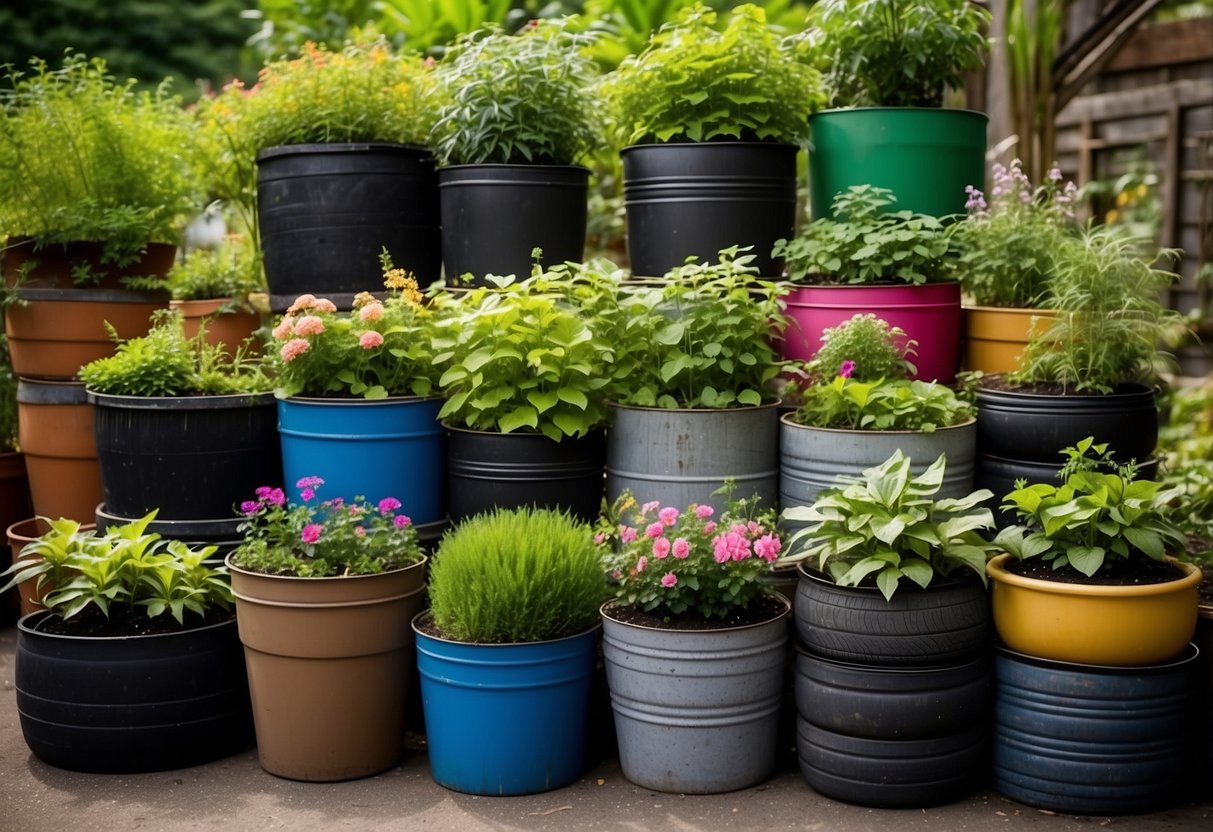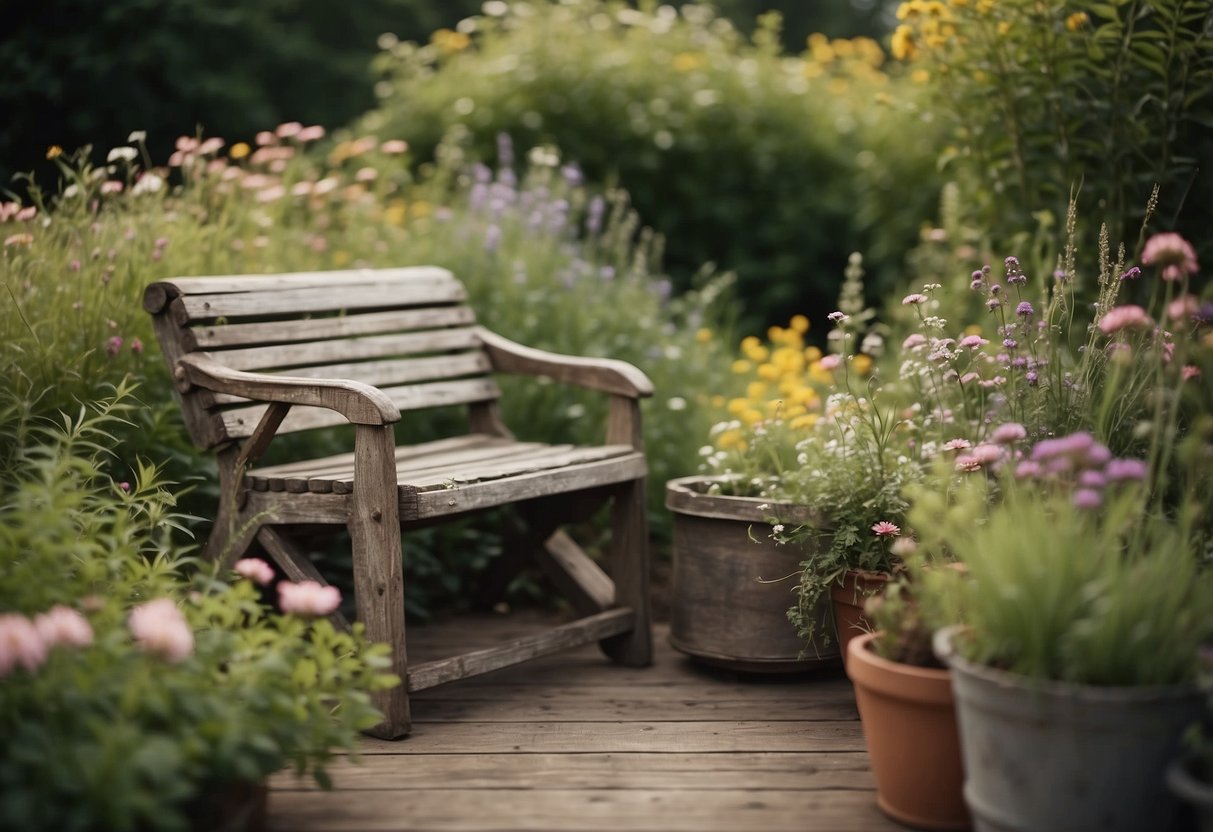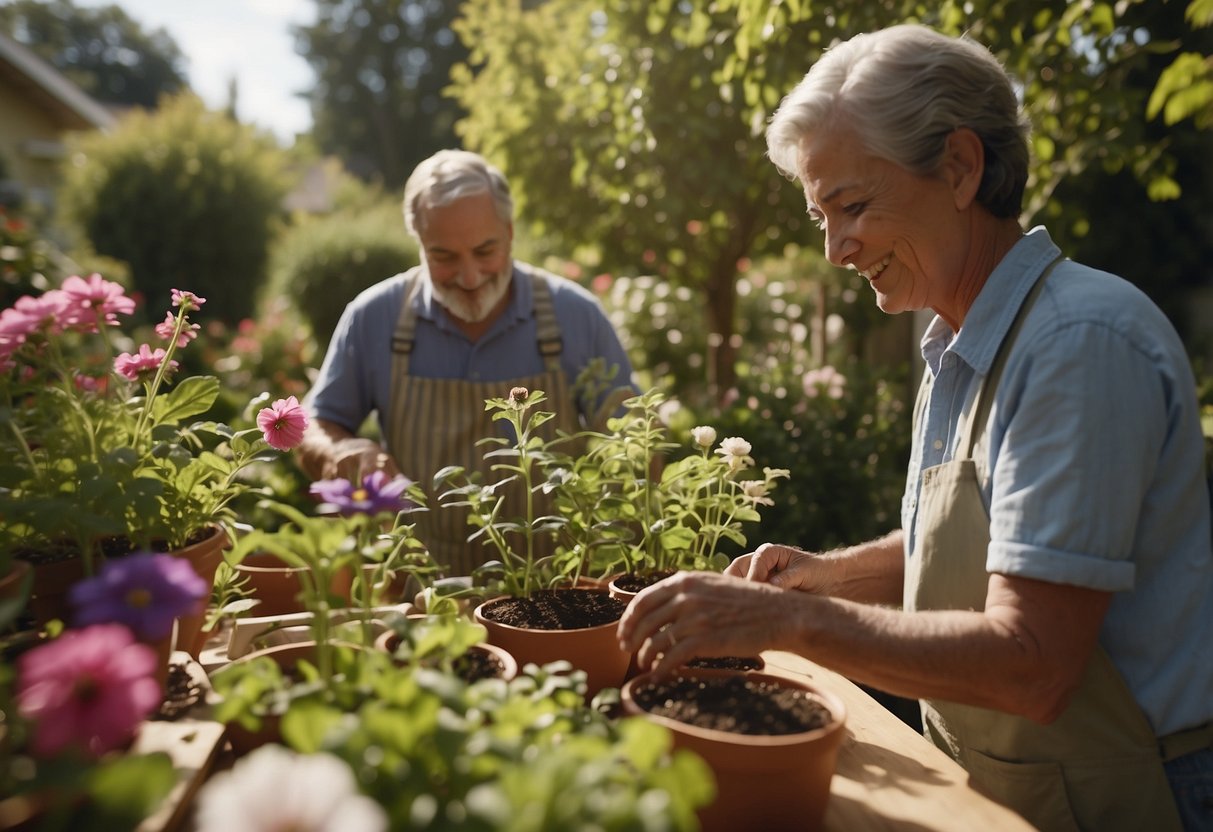Garden Ideas for Free: Creative Solutions on a Budget
Gardening is a fulfilling and therapeutic hobby that can transform any space into a lively oasis without breaking the bank. Discovering new garden ideas for free helps you creatively enhance your yard while staying on budget. You can easily find inspiration and practical plans to create a beautiful garden with plants that thrive in any environment.

Your garden can become a sanctuary filled with color and life, perfect for relaxing, entertaining, or enjoying nature. From small garden designs to expansive layouts, there are numerous ways to make your outdoor space special. Affordable garden ideas are closer than you think and can be just what you need to start your gardening journey.
1) DIY Compost Bin

Building a DIY compost bin is a great way to recycle kitchen scraps and yard waste. It’s easy and saves you money on expensive compost.
You can make a simple compost bin using just a couple of 5-gallon buckets and a drill. This is perfect if you have a small yard or live in an apartment.
For a sturdier option, use untreated wood like cedar or redwood which resists rot. Assemble with basic tools like screws and a drill for a longer-lasting bin. Check out these plans for detailed instructions.
2) Homemade Plant Markers

Creating your own plant markers is both fun and practical. You can use materials you already have at home, like popsicle sticks or old spoons.
For a more artistic touch, consider painting small rocks with plant names. Recycled materials like wine corks or scrap wood can also make unique and durable markers.
Clay markers are another option. Shape oven-baked clay into small plaques, stamp them with plant names, and bake. This method creates chic and lasting markers. For more inspiration, check out detailed DIY ideas.
3) Upcycled Container Planters

Turn your old items into new homes for your plants. You can repurpose almost anything into a planter.
Use a smudge pot as a unique container, perfect for adding character to your garden.
Consider turning a toolbox or wheelbarrow into a planter for a vintage touch.
Old tin cans, painted and decorated, make charming planters. Hang them from trees or place them on your porch.
4) Rainwater Harvesting System

Collecting rainwater is a simple and eco-friendly way to water your garden. You can make a basic system using a trash can rain barrel with a lid and a spigot.
Attach the spigot to the barrel using washers and Teflon tape to prevent leaks. Place it under a gutter downspout to collect rain efficiently.
For a more detailed guide, check out this DIY rainwater harvesting tutorial. This small project is easy to set up and can save you money on your water bill!
5) Recycled Garden Path

Creating a recycled garden path is both eco-friendly and cost-effective. You can start by using old bricks or broken concrete pieces to form a unique walkway.
Consider using wood slices from fallen trees or leftover planks to add a rustic charm to your garden. You can also repurpose wine bottles for pathway edging.
These materials not only reduce waste but also give your garden a creative and personal touch. For more ideas, you might find inspiration in these recycled garden path ideas.
6) Secondhand Garden Furniture

Using secondhand garden furniture is a smart way to add charm to your outdoor space without spending much.
Look for old metal chairs, wooden benches, and wicker baskets at flea markets or thrift stores. These items can add a vintage feel to your garden.
If you find a piece with some wear and tear, don’t worry. A fresh coat of paint or new cushions can make it look brand new. Explore more tips for secondhand furniture from Cottage on Bunker Hill.
Happy gardening!
7) Homemade Bird Feeder

Creating a homemade bird feeder is a fun and rewarding garden project.
You can make a simple bird feeder using a cardboard tube and some birdseed.
A soup ladle can also be used for a creative bird feeder design.
For a stylish touch, try making a wine bottle bird feeder.
These projects are easy and inexpensive, bringing birds to your garden while adding charm.
8) Seed Swaps with Neighbors

Organize a seed swap in your neighborhood. It’s a fun way to get new plants without spending money.
Invite friends and neighbors to bring seeds they don’t need. Everyone can trade and try growing something new.
It’s also a great chance to share gardening tips and stories. You might learn about new plants or find someone with the same interests.
9) DIY Vertical Garden

A vertical garden can save space and add a stunning look to any outdoor area. You can use almost anything for this project.
Repurpose an old shelf or a wooden pallet. Attach planters to it and hang it on your fence or wall.
Even a kitchen spice rack can be turned into a unique vertical garden for herbs.
For more creative ideas, check out these DIY vertical garden ideas.
10) Reclaimed Wood Raised Beds

Using reclaimed wood to build raised beds is a wonderful idea. It’s eco-friendly and gives your garden a rustic charm. You can often find reclaimed wood for free or at a low cost.
Start by collecting wood from old pallets, barns, or even discarded furniture. Make sure the wood is untreated and free of harmful chemicals.
Measure and cut the wood to your desired dimensions. Assemble the pieces into a rectangular frame. This creates a sturdy, attractive garden bed that’s perfect for growing vegetables, herbs, or flowers.
Check out these raised bed garden ideas for more inspiration.
Planning Your Free Garden

Creating a free garden is all about smart planning. Picking the perfect spot, checking soil quality, and selecting the best plants are key steps.
Choosing the Right Space
Choosing the right spot for your garden is crucial. Find a space in your yard that gets at least six hours of sunlight daily. Sunlight is vital for most plants to grow well. Check that the area has proper drainage to prevent waterlogging.
Observe the space at different times of the day. See how shadows fall from trees and buildings. Avoid low-lying areas where water might pool after it rains. Consider how close the garden will be to your house for easy watering and harvesting.
Tips for Choosing the Right Space:
- Sunny: Six hours of sun
- Well-drained: No pooling water
- Accessible: Easy to reach
Assessing Soil Quality
Good soil is essential for a thriving garden. Start by checking the soil’s texture. You want soil that is crumbly and rich, not too sandy or clayey. Perform a simple test: squeeze a handful of moist soil. It should hold its shape but crumble when poked.
Basic home tests can reveal a lot. Check the pH using a kit from a garden center; most vegetables need a pH between 6.0 and 7.0. If the pH is off, you can adjust it with organic matter like compost or certain garden lime.
Key Factors:
- Texture: Crumbly and rich
- pH Level: 6.0 to 7.0
- Amendments: Use compost or lime
Deciding on Plants and Flowers
Selecting the right plants and flowers is the fun part. Think about what you enjoy eating and what grows well in your climate. Start with easy-to-grow plants like tomatoes, carrots, and lettuce if you’re a beginner.
Consider perennials like herbs that come back every year, reducing future planting efforts. Flowers such as marigolds and nasturtiums can add beauty while deterring pests. Use resources like the Old Farmer’s Almanac for ideas and Better Homes & Gardens for layout plans.
Choices to Consider:
- Vegetables: Tomatoes, carrots, lettuce
- Herbs: Perennials like mint or thyme
- Flowers: Marigolds, nasturtiums
DIY Gardening Techniques

Using do-it-yourself methods in your garden can save money and make your space look great. These techniques include composting food scraps, making your own fertilizers, and reusing things you already have at home.
Composting at Home
Turning kitchen scraps into compost is a great way to enrich your garden soil. You can use fruit and vegetable peels, coffee grounds, and eggshells. Avoid meat and dairy products as they can attract pests.
Start by choosing a compost bin or creating a compost pile in your backyard. Layer the green waste (like fruit peels) with brown waste (like dry leaves or paper). Mix the pile every few weeks to help it break down faster.
In a few months, you’ll have rich compost to use in your garden. Composting reduces waste and gives your plants the nutrients they need to grow strong and healthy.
Creating Natural Fertilizers
Homemade fertilizers can be powerful and safe for your garden. One effective method is to create a banana peel fertilizer. Collect banana peels and soak them in water for several days. Use the resulting liquid to water your plants, giving them a boost of potassium.
Another option is coffee grounds. They are rich in nitrogen, which is important for plant growth. Sprinkle used coffee grounds around the base of your plants or mix them into the soil.
Epsom salt is also helpful for plants needing magnesium. Dissolve a tablespoon in a gallon of water and use it to water your garden. These simple steps can improve plant health without spending much money.
Repurposing Household Items
Many household items can find a second life in your garden. Old tires can be turned into planters by filling them with soil and planting flowers or vegetables. They add a rustic charm and are durable.
Glass jars can be used as small herb gardens. Fill them with soil and plant herbs like basil or mint. They are perfect for windowsills and add greenery indoors.
Broken tools can become garden decorations. For example, an old rake can be mounted on a wall to hang garden tools.
Repurposing saves money and adds unique touches to your garden.







